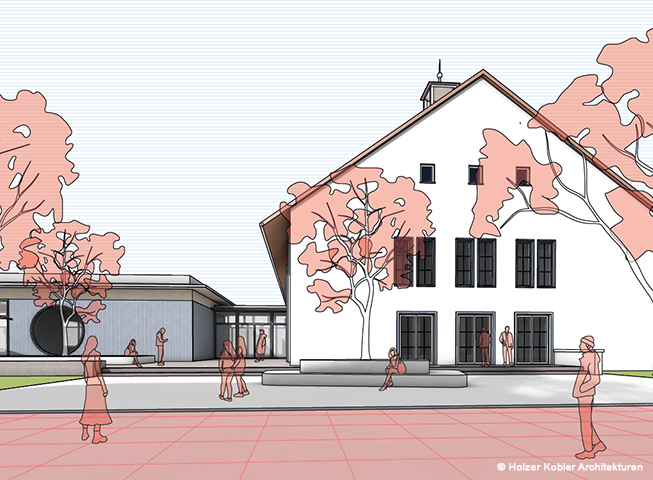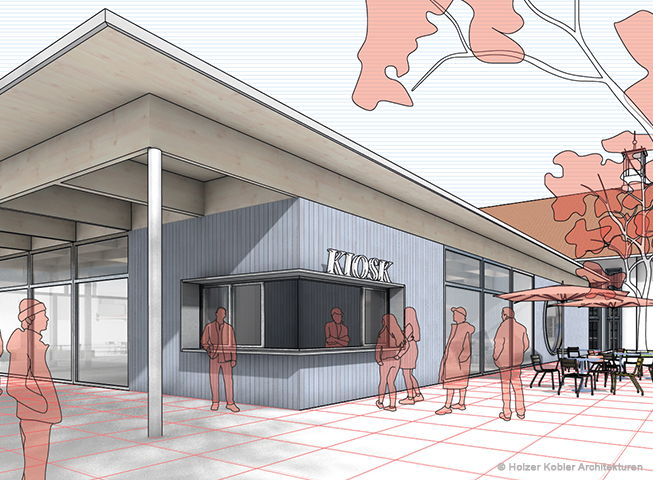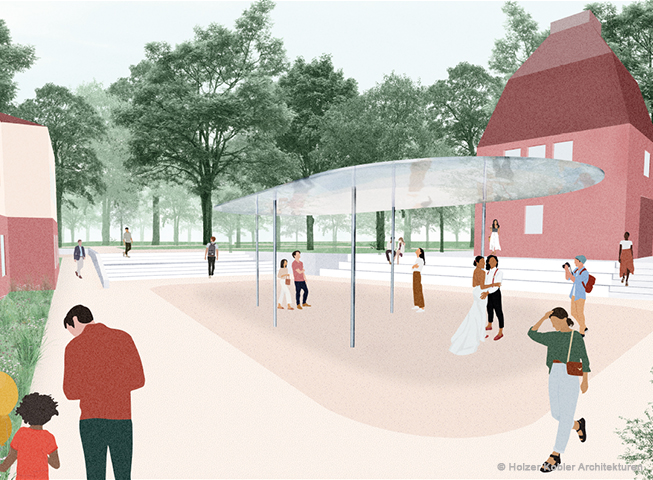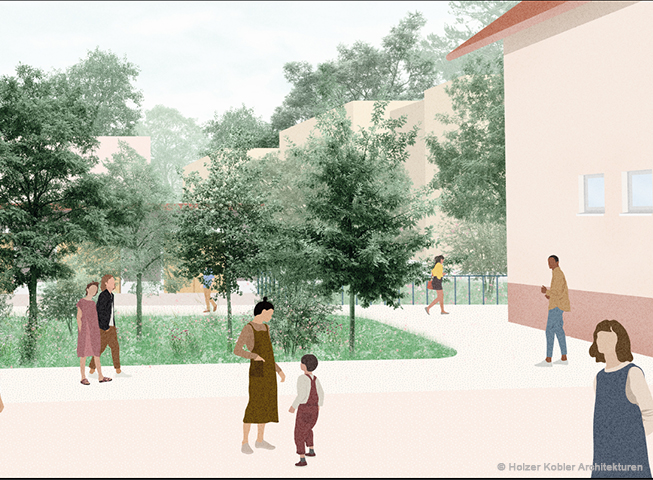The House of Recreation, an important architectural monument in the picturesque seaside resort of Ahlbeck on the island of Usedom in Mecklenburg-Western Pomerania, has had an eventful history. During the GDR era, it served as a cultural and catering centre for holidaymakers and played a central role in the social life of the region. The listed, historic building is now facing a new challenge: a comprehensive general refurbishment and an extension that will not only ensure its preservation but also revitalise its useful life and attractiveness. With its central location in Ahlbeck, the intention is for it to resume its role as a meeting place and become a sustainable centre for everyone, whether they are residents or visitors.
The event hall has a capacity for up to 300 people, which make it ideal for large events. Three entrances provide flexible access to the main building. There is a direct connection from the extension – consisting of a catering area, cultural terrace and kiosk – to the event hall to ensure that events run smoothly.
The climate-positive quarter has a sustainable energy supply characterised by plus energy. This minimises consumption and maximises the generation of renewable energy by integrating environmental energy. An energy hub acts as a heat, cooling and electricity storage system and enables more efficient integration of renewable energies, creates better grid serviceability and distributes surplus energy to the local neighbourhood. Waste heat from the building is also stored in the energy hub or in the ground so that it can be used efficiently when needed.
Another important point is the efficient reuse of rainwater. This is used as irrigation for green roofs, to run grey water systems in buildings and recharge groundwater. All of these steps mean that we can make active contribution to the conservation of resources and the promotion of a sustainable way of life.



